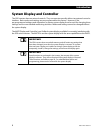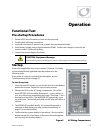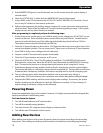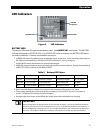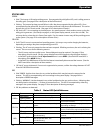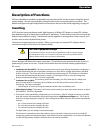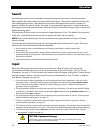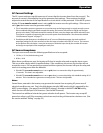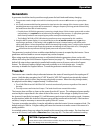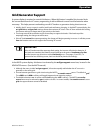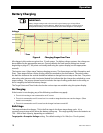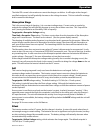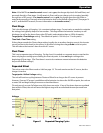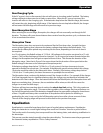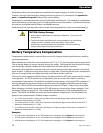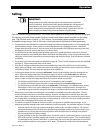
Operation
16 900-0114-01-00 Rev A
Generators
A generator should be sized to provide enough power for both loads and battery charging.
The generator needs a single circuit which is sized to provide current to
all
inverters on a given phase
or leg.
It is usually recommended that the generator be sized at twice the wattage of the inverter system. Many
portable generators may not be able to maintain AC voltage or frequency for long periods of time if they
are loaded more than 80% of rated capacity.
If a split-phase 120/240 Vac generator is powering a single-phase 120 Vac inverter system with no other
compensation, it is required to be at least twice the wattage of the inverters. (A split-phase generator
that is heavily loaded on one output leg may suffer severely from balancing issues.)
The OutBack FW-X240 or PSX-240 balancing transformers may compensate for this condition.
Using the MATE system display, it is recommended to set the
ac transfer control
menu to
gen
when
connecting a generator. If the setting is left on
grid
, the inverter’s internal settings will still be set for
utility-grade power. Unless the generator delivers extremely high-quality power, it might not be accepted.
(Alternately, the inverter might accept the generator and attempt to sell power back to it.) Changing to
gen
will remove the requirements for high-grade power and will prevent selling.
The generator is required to have a stable output before its power is accepted by the inverter. Some
generators with less stable or uneven outputs may not be accepted.
When using capacitor-excited generators or self-excited induction generators, there can be side
effects while using the Grid/Generator Support feature (see page 17). These generators d
o
not always
deliver full output when operating in parallel with another source of power, such as the Support
feature. The inverter’s battery charger may work erratically or at a low charge rate. It may be
necessary to disable the Support feature. Consult the generator manufacturer if necessary.
Transfer
The inverter uses a transfer relay to alternate between the states of inverting and of accepting an AC
source. Until the relay energizes, the AC HOT IN and AC HOT OUT terminals are electrically isolated
from each other; when it closes, they become electrically common. When the relay changes states,
the physical transfer delay is approximately 12 milliseconds.
The AC NEUTRAL IN and AC NEUTRAL OUT terminals are electrically common regardless of the state of
the relay.
The relay contacts are limited to 60 amps. The loads should never exceed this number.
The inverter does not filter or clean up the power from the AC source. The voltage and power quality
received by the output loads is the same as that of the source. If the voltage or quality do not meet
the inverter’s input limits (see page 15), it will disconnect and return to the inverting mode. However,
any fluctuatio
ns within the inverter’s tolerance range will be transferred to the loads. If the loads are
sensitive, it may be necessary to ensure the quality of the AC source.
To ensure a smoother transition, it may be advisable to raise the inverter’s lower acceptance limit. The
default setting is 108 Vac. A higher setting will cause the inverter to transfer sooner in the event of a
quality problem.
In a stacked system, slaves are ordered to transfer at the same time as the master. If a slave does not
sense an AC source, it will suffer a
Phase Loss
Error (see page 36). The slave will continue inverting.
CAUTION: Equipment Damage
Current draw in excess of the inverter’s transfer relay rating can damage the transfer
relay. This damage is not covered by warranty.



